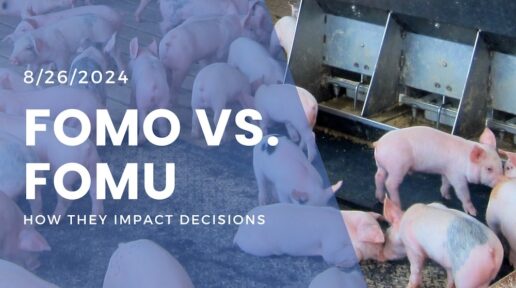As temperatures drop and snow moves across the U.S., there’s one topic that might be even scarier than the weather itself:
Your propane bill.
Energy costs in barns are a battle every year, especially in winter. According to a National Hog Farmer survey, for example, roughly 88% of all fossil energy in swine nurseries is used for heating. Naturally, as temperatures drop, your costs go up.
While most producers will factor higher energy costs into their accounting this time of year, sometimes those bills can far surpass their predictions.
Imagine a surprise energy bill showing up in the mail — telling you you owe $30,000. You thought you’d been careful about energy usage that month, but it turns out there was significant waste happening out of sight.
While $30,000 might seem outrageous, this story is unfortunately not a hypothetical: it actually happened in January of last year to a grower in Iowa. That $30,000 price tag matched his entire LP spend the previous year.
Every penny counts, and an unpredictable bill of that size can cause serious damage.
Now, bills that extreme are uncommon. But the overall issue of energy waste at hog barns is widespread — and it’s costing producers money every day.
When total energy costs average about $1.88 per pig — and you have thousands of hogs — getting your energy costs down (even by a few cents per pig) adds up.
So how do you save money on energy costs in a hog barn? You’ve first got to identify where the losses originate.
How does energy loss happen in animal ag production?
Any cost-saving strategy has to start with understanding where waste happens.
Energy and heat can slip away through:
- LP leaks at the tank or in a hose
- Improper ventilation (either too little or too much)
- Maintaining a too-high temperature (for example, overheating a 1,000-head nursery by just 4 degrees can bump your heating costs by 50% or more)
- Heater issues in office space (in 2022 alone, Disytnct has seen 532 office temperature alarms go off)
However energy loss happens, the results are the same: wasted money, and potentially even physical harm to your animals.
How can pork producers prevent energy waste?
You can minimize costs by regularly checking your equipment for leaks, ensuring proper ventilation in your buildings, and using technology to monitor conditions in real time.
Many producers will set their barns’ temperatures to adjust throughout the day — automating it to drop a couple degrees in daytime, for example, when the sun warms the building.
But what happens if those settings fail? What if the automation never kicks in, and the internal temperature is actually way warmer than necessary? Maybe you only need the barn to be 78 degrees, but because of an automation failure — and no one going out to the barn for several hours — you’re paying for it to be 90 degrees instead. Those dollars add up.
That possibility is why an alarm system could be the difference between “normal” energy bills — and unpleasant surprises. Knowing quickly when the temperature has shifted in your barn is critical to keep your animals healthy, of course. But that bird’s-eye view over your operation can also keep dollars from flying out the doors.
It’s not just barn temperatures that you need to monitor. Office space can also experience fluctuations that cost you money. Especially in small office spaces, it’s a fine line between keeping it warm enough to avoid freezing water lines, and paying for a 90-degree office.
Without a robust alarm system in all your facilities, you could leak away hundreds — even thousands — of dollars.
A remote monitoring system can help you:
- Make real-time adjustments
- Spot energy consumption trends and identify outliers
- Keep an eye out for potential leaks or problems — without actually having to send someone on foot to each barn
- React to the present, but also plan for the future
Keep surprise bills at bay
Now more than ever, lowering your energy costs is important. We’re heading into a season of cold temperatures and potentially extreme weather events. Fuel costs are already dramatically on the rise — and at their highest rates in nearly a decade. And thanks to inflation, the cost is also higher for… well, almost everything else you need to keep your operation running.
When barns can get the variable of energy waste under control, not only are your animals healthier — but so is your bottom line.


